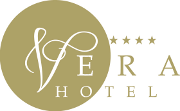The Victorian Building of today’s Hotel Vera was built in 1903, originally known by the name of “Villa Heimgarten”. It served as accommodation for the increasing number of Joachimsthal visitors and workers following the re-discovery of its uranium deposits in 19th century.
Although in 1938, the town of Joachimsthal was annexed by Germany as one of the municipalities in Sudetenland the purpose of “Villa Heimgarten” remain to serve as accommodation.
Following the end of World War II as part of the Benes decrees the town of Jáchymov was returned to Czech Republic, German-speaking population was expelled and replaced by Czech settlers. Shortly after Jáchymov become closed to visitors due to its strategic uranium deposits.
The building was nationalized three years later in 1948 as part of the country-wide nationalization by the rule of established post-war communist party. The Hotel was converted to fire station during that time and served in this function till early 2003 when the building was purchased by today’s owner.
Between 2003 and 2015 the Hotel undergo full reconstruction to current state. During the reconstruction a great care was taken to preserve the beautiful Victorian style of 19th century, both inside and outside.
Major changes on the outside include addition of the elevator shaft on left side of the building and relocation of the main entrance to the current location on the west side of the building.
Major changes on the inside include structural re-enforcements to meet latest EU standards, adding stronger ceilings with reinforced steel columns to support newly added bathroom for all guest rooms. As a result of roof and attic reconstruction it was possible to add the beautiful “Grand” and “Superior” suites which both have large 2nd bedroom in the attic. The original chimney was preserved during the reconstruction of ground floor and the current fireplace was added to it.
The Hotel Vera has been re-opened to welcome its first guests in November 2015.


